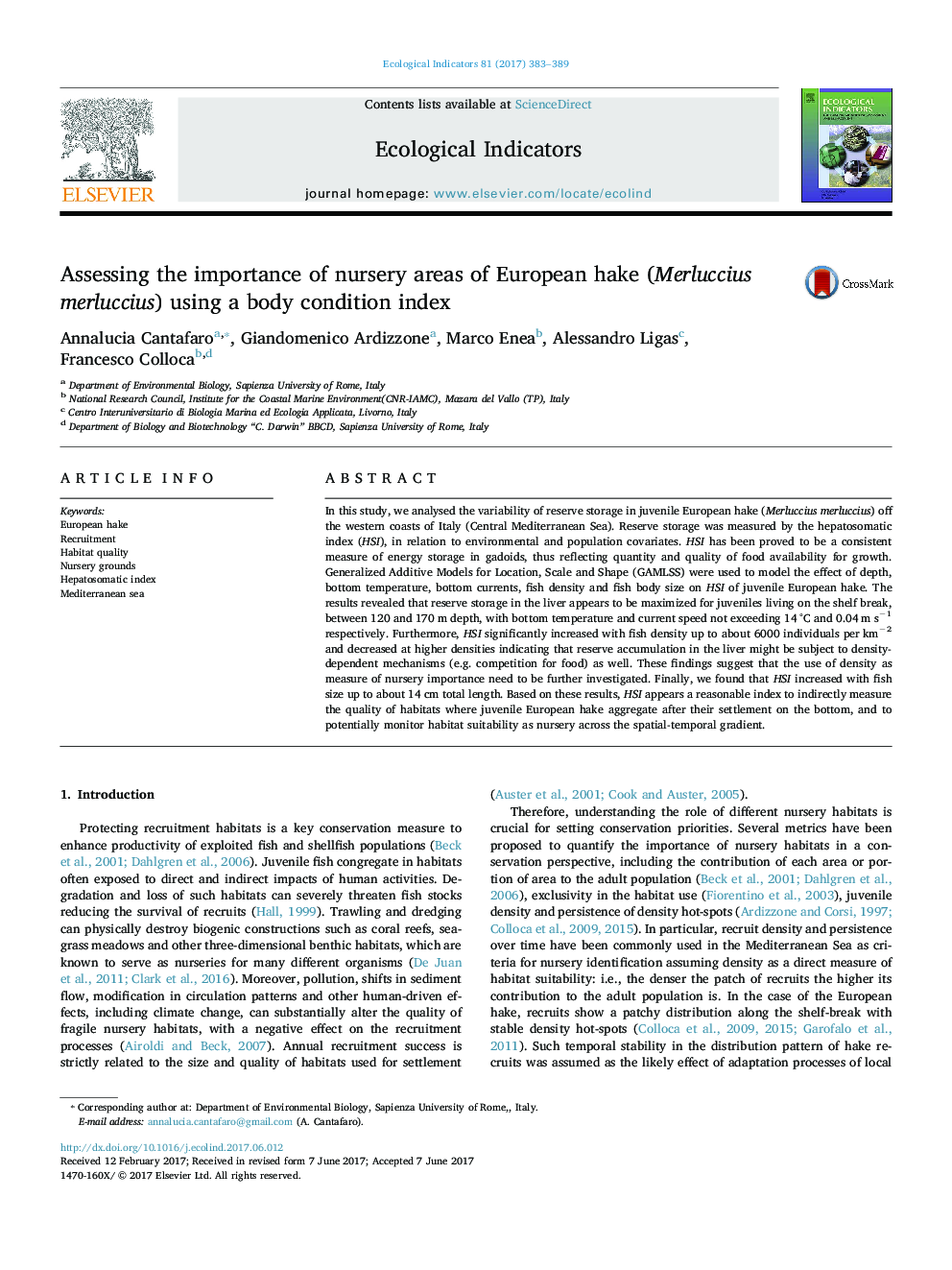| Article ID | Journal | Published Year | Pages | File Type |
|---|---|---|---|---|
| 5741443 | Ecological Indicators | 2017 | 7 Pages |
In this study, we analysed the variability of reserve storage in juvenile European hake (Merluccius merluccius) off the western coasts of Italy (Central Mediterranean Sea). Reserve storage was measured by the hepatosomatic index (HSI), in relation to environmental and population covariates. HSI has been proved to be a consistent measure of energy storage in gadoids, thus reflecting quantity and quality of food availability for growth. Generalized Additive Models for Location, Scale and Shape (GAMLSS) were used to model the effect of depth, bottom temperature, bottom currents, fish density and fish body size on HSI of juvenile European hake. The results revealed that reserve storage in the liver appears to be maximized for juveniles living on the shelf break, between 120 and 170 m depth, with bottom temperature and current speed not exceeding 14 °C and 0.04 m sâ1 respectively. Furthermore, HSI significantly increased with fish density up to about 6000 individuals per kmâ2 and decreased at higher densities indicating that reserve accumulation in the liver might be subject to density-dependent mechanisms (e.g. competition for food) as well. These findings suggest that the use of density as measure of nursery importance need to be further investigated. Finally, we found that HSI increased with fish size up to about 14 cm total length. Based on these results, HSI appears a reasonable index to indirectly measure the quality of habitats where juvenile European hake aggregate after their settlement on the bottom, and to potentially monitor habitat suitability as nursery across the spatial-temporal gradient.
